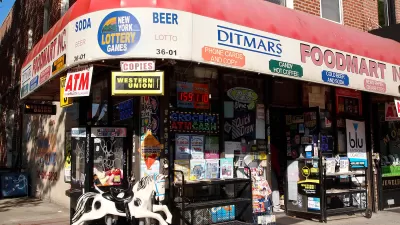While some contend that our communities are sculpted by an unfettered free market, there are a variety of programs and policies that underwrite the costs of poorly planned development. "A Brief History of Your Neighborhood" examines a few.
It’s easy to forget that our neighborhoods have evolved into the places they are over time. Their design reflects years of decisions, policies, and layers of investment and reinvestment. We may think that the way our communities developed – from the old strip mall to the new subdivision down the road – resulted from an unfettered free market based upon pure consumer demand.
But the real story is quite different. The market has played a role, but it has done so under the influence of many forces. These forces – some small, some large – collectively and dramatically influence the shape of our communities.
“A Brief History of Your Neighborhood,” is an eight part series examining some of these issues, and identifying the key public policies that shape the location and type of development we see in our communities. These policies impact the decisions we make about where to live, shop, and work. Ultimately, they determine the range of choices we have about where we put down roots and how we live our lives.
FULL STORY: A Brief History of Your Neighborhood

Alabama: Trump Terminates Settlements for Black Communities Harmed By Raw Sewage
Trump deemed the landmark civil rights agreement “illegal DEI and environmental justice policy.”

Planetizen Federal Action Tracker
A weekly monitor of how Trump’s orders and actions are impacting planners and planning in America.

The 120 Year Old Tiny Home Villages That Sheltered San Francisco’s Earthquake Refugees
More than a century ago, San Francisco mobilized to house thousands of residents displaced by the 1906 earthquake. Could their strategy offer a model for the present?

In Both Crashes and Crime, Public Transportation is Far Safer than Driving
Contrary to popular assumptions, public transportation has far lower crash and crime rates than automobile travel. For safer communities, improve and encourage transit travel.

Report: Zoning Reforms Should Complement Nashville’s Ambitious Transit Plan
Without reform, restrictive zoning codes will limit the impact of the city’s planned transit expansion and could exclude some of the residents who depend on transit the most.

Judge Orders Release of Frozen IRA, IIJA Funding
The decision is a victory for environmental groups who charged that freezing funds for critical infrastructure and disaster response programs caused “real and irreparable harm” to communities.
Urban Design for Planners 1: Software Tools
This six-course series explores essential urban design concepts using open source software and equips planners with the tools they need to participate fully in the urban design process.
Planning for Universal Design
Learn the tools for implementing Universal Design in planning regulations.
Clanton & Associates, Inc.
Jessamine County Fiscal Court
Institute for Housing and Urban Development Studies (IHS)
City of Grandview
Harvard GSD Executive Education
Toledo-Lucas County Plan Commissions
Salt Lake City
NYU Wagner Graduate School of Public Service





























